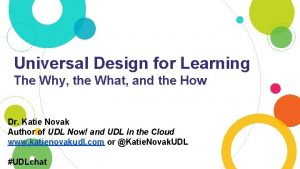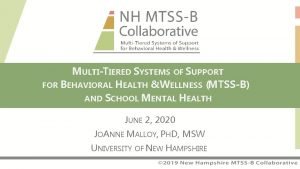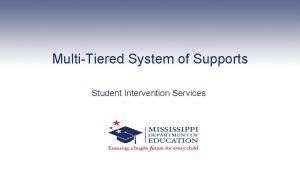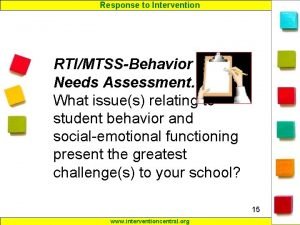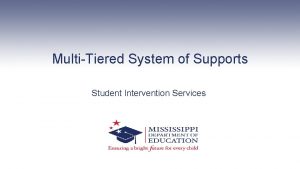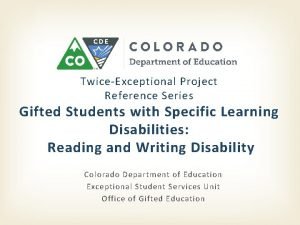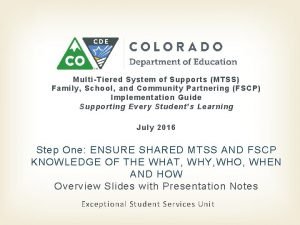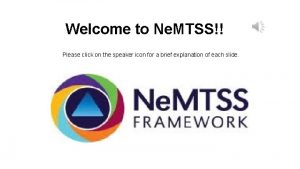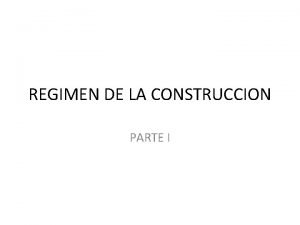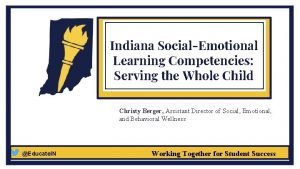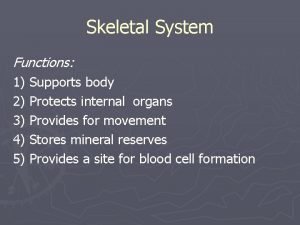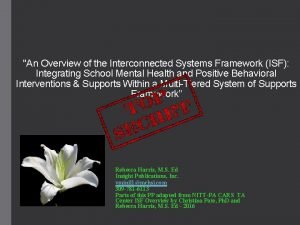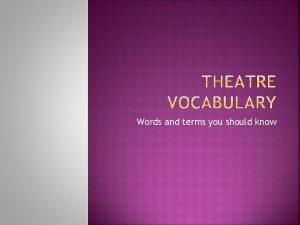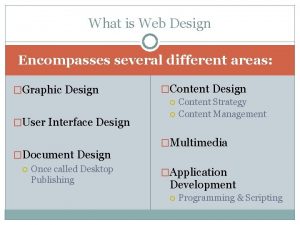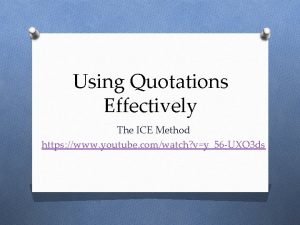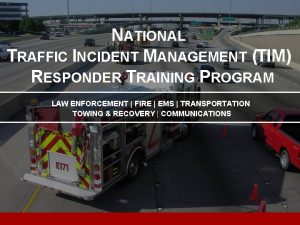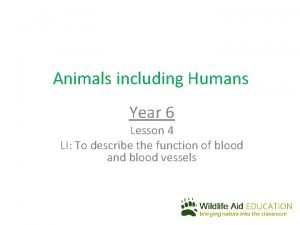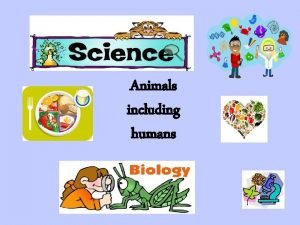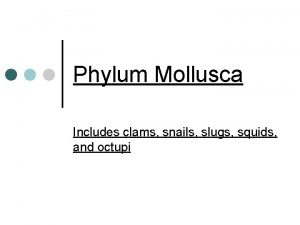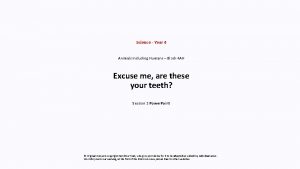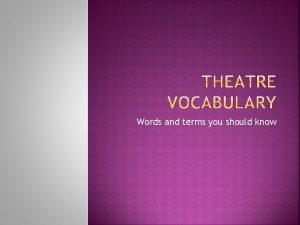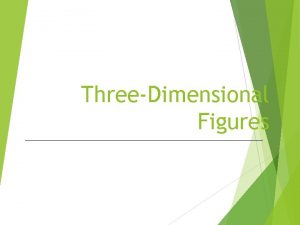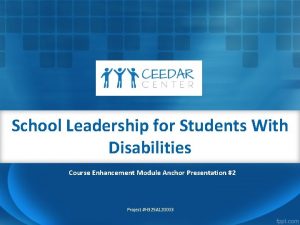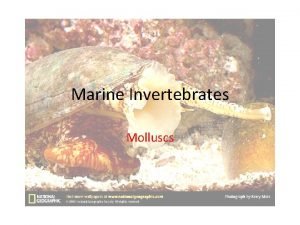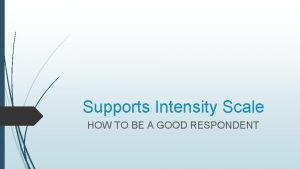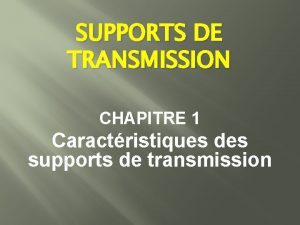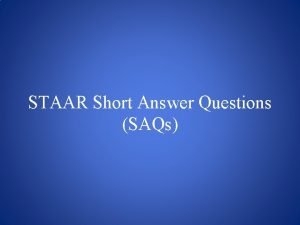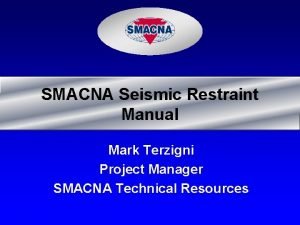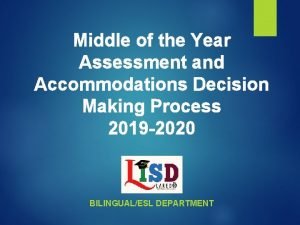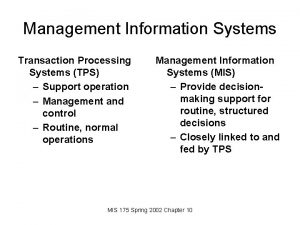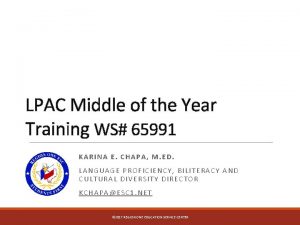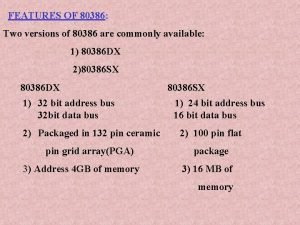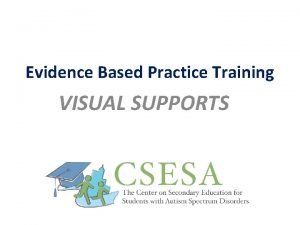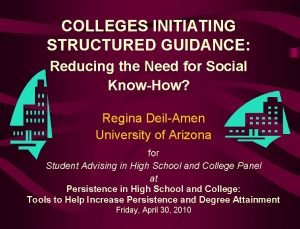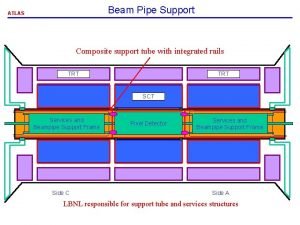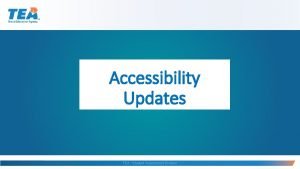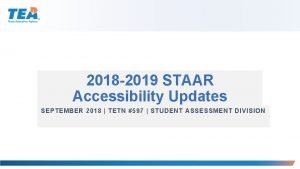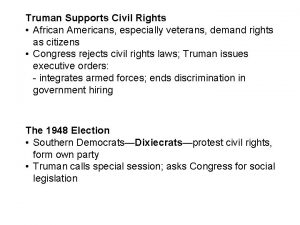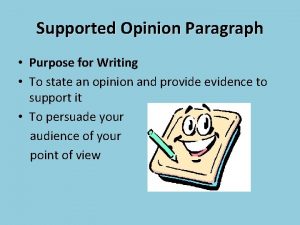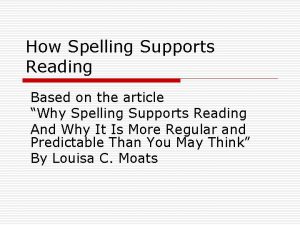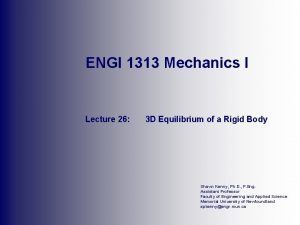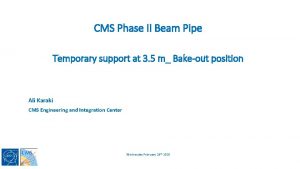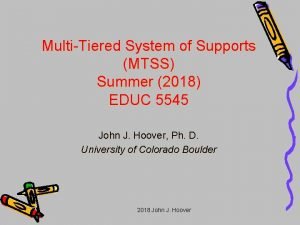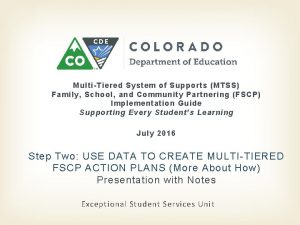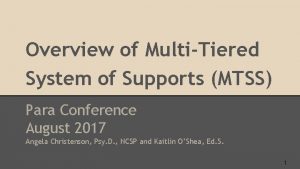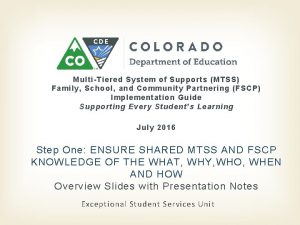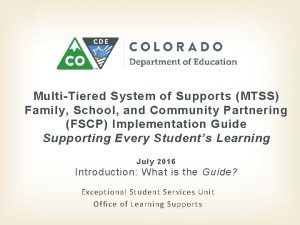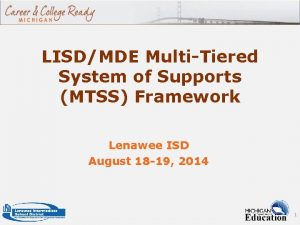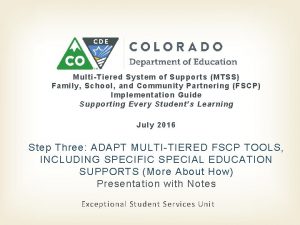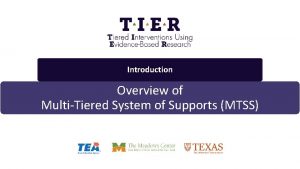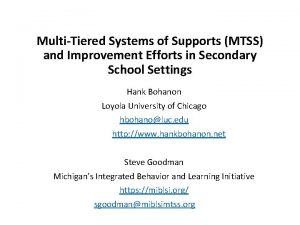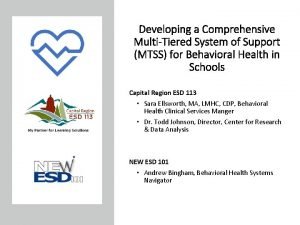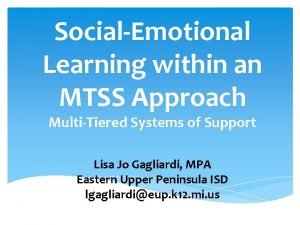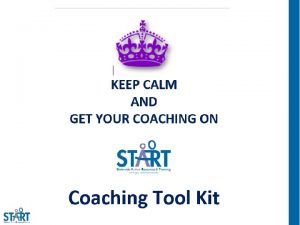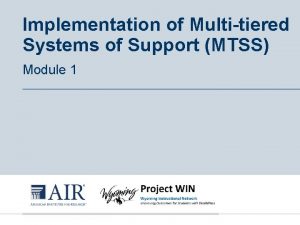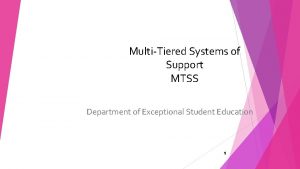Day 1 MultiTiered System of Supports MTSS Including
































































- Slides: 64

Day 1 Multi-Tiered System of Supports (MTSS*): Including Advanced and Gifted Students in Your Framework Mary Schmidt (515. 270. 0405 ext. 14375) mschmidt@heartlandaea. org http: //idmforgifted. pbworks. com *Making Talented Students Soar

Activating Thinking • Mindstreaming – What is one question you have about MTSS for Advanced Proficiency and what experiences have led you to that question? – What do you hope to learn in this class and/or why are you here? – Record on Padlet

Session Outcomes • To identify shifts in thinking and vocabulary necessary to implement MTSS for gifted learners • To identify evidence-based practices in gifted education that align with the MTSS tiers of support • Understand common myths and develop responses to them • Identify ways to embed advanced/gifted-friendly language and practices into an MTSS framework.

Agenda • • • Welcome/Introductions/Outcomes Course requirements – syllabus & rubric MTSS: a history Myths about Gifted Creating a Sense of Urgency Connections to Advanced/Gifted MTSS Guiding Principles Using Data MTSS (Rt. I) in Action

KWL • What do you know – or think you know – about MTSS? • What questions do you have about MTSS?

MTSS: A History • 2004 -ish – IDM • 2011 -ish – Rt. I • 2014 – MTSS All hold a similar premise Shift from intervention focus to support focus

MTSS: A History • MTSS: Focuses on supports needed rather than on interventions • Focus on creating a strong Universal Tier that meets the needs of most students

MTSS: A History • Part of Collaborating for Iowa’s Kids (C 4 K) – Intent – To work more effectively and efficiently as a full educational system to accomplish a few agreed upon priorities. – Goal – All learners will be proficient in reading by the end of 3 rd grade across subgroups. • MTSS is the framework by which the intent and goals are accomplished.

Responding to Myths • 10 common myths – Knowing how to respond – What does the research say?

Ten Myths About Gifted Education Adapted from National Association for Gifted Children (NAGC) Sally Beisser, Ph. D. , Rosanne Malek, M. A Debra Mishak, Ph. D. , Mary Schmidt, MA 2015

Myth 1: Gifted children will do fine on their own. • Fact: Gifted children cannot teach themselves. • Gifted students need guidance from welltrained teachers. • Student boredom – as a result of not being challenged – can lead to lower achievement and even dropping out. (Neihart et al, 2002).

Myth 2: Teachers challenge all students in the classroom. • Fact: Most teachers have not been prepared to work with advanced students; therefore, many of these children are not learning new material every day. • “In spite of commitment and dedication, teachers are often unable to recognize and support gifted learners without specialized training” (Archambault et al, 1993; Loveless et al, 2008).

Myth 3: Gifted students are role models for other students in the class • Fact: Average or below-average students do not look to the gifted students as role models. • “Most students model their behavior on those who have similar capabilities” (Fiedler et al, 1993).

Myth 4: All children are gifted. • Fact: While all children have strengths and weaknesses, not all are academically gifted. • “Gifted” is not meant to mean “better than, ” it is simply a sorting term used to get students into programs that meet their specific learning needs (Bainbridge).

Myth 5: Academic acceleration is socially harmful for accelerated students. • Fact: Gifted children are often happier with older children who share their interests and abilities. • “Acceleration interventions […] can provide […] flexibility in curriculum delivery to meet student needs” (National Assoc. For Gifted Children, 2009).

Myth 6: Gifted programs are elitist. • Fact: Funding mechanisms and service availability are elitist, but meeting the needs of gifted students is not. • High-ability learners come from all cultures, ethnic backgrounds, and socioeconomic groups. • Often, funding is from the local level only, making program availability dependent on local SES (NAGC, ibid).

Myth 7: Students getting poor or average grades cannot be gifted. • Fact: Not all gifted students are academically successful. • High ability students may become bored or frustrated if their specific learning needs are not met. • Well-trained teachers are necessary to avoid this (Winner, 1996; Baum et al, 1995).

Myth 8: Gifted students are happy, popular, and welladjusted in school. • Fact: School can be a negative experience for some gifted students. • Gifted students are “more prone to emotional and moral intensity” (i. e. a stronger sense of right and wrong, and stronger emotions associated with it). • They also often suffer from perfectionism, or have deep concerns with societal problems. • Intelligence can also be a source of negative peer interaction. • Counseling staff must be trained to detect these issues (Neihart et al, 2002).

Myth 9: A child receiving special education services cannot also be gifted. • Fact: Having strengths in one area does not mean that gifted students need support in other areas. • Some gifted students have learning or other disabilities. • Sometimes, students who are “twiceexceptional” do not receive services that meet any or all of their specific learning needs (Ralabate, 2006).

Myth 10: Gifted education programs require an abundance of resources • Fact: Offering gifted services does not need to break the bank. • While some resources are needed (professional development, assessment tools, curriculum development) launching a program only requires “the belief that gifted students require something qualitatively different from the regular curriculum” (Purcell and Eckert, 2006; Winnebrenner and Devlin, 2001).

Terminology • • Advanced Proficiency Advanced High Ability Gifted


Summarizing The high achiever , while the gifted learner. In contrast, the creative thinker . These distinctions are helpful because .

It’s Not About the Label

e h t n i ? s t y e a g w t a h W

What’s Happening at Home? • Examine your Google form data • What do these data show? • What questions do you have?

A Sense of Urgency • Fordham Study – While the nation’s lowest-achieving youngsters made rapid gains from 2000 to 2007, the performance of top students was languid. • Jonathan Plucker – Excellence Gaps • 2010 • 2013

The accountability association • The pattern—big gains for low achievers and lesser ones for high achievers—is associated with the introduction of accountability systems in general, not just NCLB.

Struggling students command attention… • Teachers are much more likely to indicate that struggling students, not advanced students, are their top priority. • Low-achieving students receive dramatically more attention from teachers. 29

…but that doesn’t reflect teachers’ own views • Teachers believe that all students deserve their fair share of attention. 30

Excellence Gaps • differences between subgroups of students performing at the highest levels of achievement. Mind the (Other) Gap, Plucker, et. al. 2010

A Sense of Urgency • Average 1 st grade classroom – As many as 12 grade equivalencies – IQ range of up to 80 points • 5 th grade teacher reports – 30 students – Reading levels from 1. 6 - 12. 8 – 12 gifted students Cleaver, 2008

MTSS Defined • Response to Intervention MTSS in Iowa is an every-education decision-making framework of evidence-based practices in instruction and assessment that addresses the needs of all students starting in general education. • Collaborating for Iowa’s Kids • Phase One Implementation • Fall 2013 • 33

MTSS Defined • Response to Intervention MTSS in Iowa is an every-education decision-making framework of evidence-based practices in instruction and assessment that addresses the needs of all students starting in general education. • Collaborating for Iowa’s Kids • Phase One Implementation • Fall 2013 • 34

Questions to Consider What do we mean by “ALL”? What are the attitudes in your building about advanced proficiency kids? What are the assumptions about these kids?

Universal, Targeted and Intensive Layers are added for those that need additional supports! • Collaborating for Iowa’s Kids • Phase One Implementation • Fall 2013 • 36

Intensive-L Targeted-L Another View Universal Targeted-R Intensive-R

Questions to Consider… • How do we define “Universal Tier”? • Does Universal Tier alone provide the right level of challenge for the student? • Is the Universal Tier sufficiently challenging to elicit advanced performance? • What opportunities for pre-assessment do we offer? • What’s the difference between a student who scores at the lower end of advanced proficiency and the student who “ceilings out” on the test? • Why give above level assessments?

Build Self Esteem The surest path to positive self esteem is to succeed at something which one perceived would be difficult. Each time we steal a student’s struggle, we steal the opportunity for them to build selfconfidence. They must learn to do hard things to feel good about themselves. --Sylvia Rimm

Comfort Zone: Status Quo Growth Zone: Slightly Uncomfortable Crash Zone: Very Uncomfortable

Zone Of Proximal Development TASK COMPLEXITY CONTINUUM Totally independent functioning Student succeeds with adult support ZONE OF PROXIMAL DEVELOPMENT This is where learning occurs. Kids should be here 80% of the time. Task complexity prevents success

• • WHAT ZONE AM I IN? Too Easy I get it right away I already know This is a cinch I’m sure to make an A I’m coasting I feel relaxed I’m bored No big effort necessary Tomlinson • • • On Target I know some things I have to think I have to work I have to persist I hit some walls I’m on my toes I have to re-group I feel challenged Effort leads to success • • Too Hard I don’t know where to start I can’t figure it out I’m spinning my wheels I’m missing key skills I feel frustrated I feel angry This makes no sense Effort doesn’t pay off

Increase Motivation Two motivational states interfere with learning. One is anxiety; the other is boredom. Anxiety occurs when teachers expect too much, boredom when they expect too little. Mihaly Csikezentmihalyi Talented Teenagers

Novel To Routine From infancy on, high IQ individuals • are attracted to novelty • habituate rapidly • return to novelty seeking Results in large foundation of factual knowledge

Novel To Routine Gifted--transition from novel to routine accomplished in less time with fewer exposures Sousa, 2003

The Gifted Brain… *Fires faster, more frequently, and with greater intensity. *Is changed as a result of more dendritic connections compared to age peers. --B. Clark, 2003

Piaget’s Model equilibrium new information disequilibrium accommodations in existing structures assimilation equilibrium File information into existing categories Making room for information - change category or create new

Thinking Skills • Gifted kids have same range of strategies as others. • Choose more sophisticated strategy or more complex version of strategy only in the face of significant challenge. • Skill develops only when the challenge is present.

Problem Solving Gifted kids are… • more aware of problem solving strategies • more likely to switch strategies • likely to invent a strategy when the going gets tough

Metacognition • Gifted kids aren’t consistently better at metacognition • Simple content doesn’t require planning, monitoring, or evaluating thought processes (fix-up strategies) • Challenging content necessitates practicing metacognitive skills • Metacognition predicts school success better than IQ

MTSS Guiding Principles Commitments to Action • Read the guiding principle • Discuss what it means for advanced/gifted learners • Identify one or two commitments to action to bring that principle to life for advanced/gifted learners

Universal Tier for Students in Advanced Proficiency

Universal Tier D 2 Questions 1. 2. 3. 4. 5. 6. 7. Is the Universal Tier sufficient? If the Universal Tier is not sufficient, what are the needs that must be addressed? How will the Universal Tier needs be addressed? How will the implementation of the Universal Tier be monitored over time? Have Universal Tier actions been effective? Which students need support in addition to the Universal Tier? Which of the Targeted and/or Intensive Tier options is needed to meet the needs of identified students? 8. How will the Targeted and/or Intensive Tier options be implemented? 9. How will the implementation of the Targeted and Intensive Tier options be monitored over time? 10. Using the data and information, which students need changes to the Tiers they are receiving?

What is “sufficient”? Being as much as is needed.

For Advanced Proficiency… meager scant inadequate


For Once… It’s NOT about you!! Until… You know the needs of the student.

Using Data • Form trios • Read chapter 5 – Read 2 -3 paragraphs or a short section – Stop and say something • Make a connection • Ask a question • Share an insight – Repeat

District Data • Discuss what you know about the data sources your district uses in making decisions about MTSS supports. • What additional data sources would be helpful/essential for determining advanced and gifted students’ supports?

Role of the GT Teacher/Coordinat or • Review the Mosinee GT Plan of Service and Resource Guide • Complete the organizer See Wiki for access to these documents.

Revisit KWL • Go back to the KWL • What have you learned? Have any misconceptions been uncovered?

Closure • • • What has stretched your thinking today? Share with partner 1. What’s your most important take away? Share with partner 2. What piece of learning is most applicable/helpful to MTSS implementation in your setting? • Share with partner 3. • What question(s) do you still have? • Share with partner 4.

Home Play • Read “Developing Verbal Talent” by Michael Clay Thompson – Identify 5 key points that relate to MTSS • Gather and bring reading data to discuss in terms of advanced learner needs and supports • Finish GT Plan of Service organizer • Read Chapter 12 in text. • Identify key content to share with MTSS leaders in your district.

Next Session • Saturday? • Weekday? • Let’s shoot for late January or early February
 Day 1 day 2 day 3 day 4
Day 1 day 2 day 3 day 4 Day 1 day 2 day 817
Day 1 day 2 day 817 Mtss and udl
Mtss and udl Mtss meme
Mtss meme Mtss-b
Mtss-b Mtss documentation packet
Mtss documentation packet Mtss needs assessment
Mtss needs assessment Mtss documentation packet
Mtss documentation packet Benefits of mtss
Benefits of mtss Mtss
Mtss Mtss nebraska
Mtss nebraska Decreto 283/996
Decreto 283/996 Mtss infographic
Mtss infographic Indiana social emotional learning competencies
Indiana social emotional learning competencies What system supports the body
What system supports the body Pros and cons of pbis
Pros and cons of pbis Family sis schoolmax
Family sis schoolmax Oceans apart day after day
Oceans apart day after day Day to day maintenance
Day to day maintenance Physical science chapter 6 review answers
Physical science chapter 6 review answers I don't know about tomorrow
I don't know about tomorrow What happened on sunday in romeo and juliet
What happened on sunday in romeo and juliet Growing day by day
Growing day by day Define seed dormancy
Define seed dormancy Germination conclusion
Germination conclusion Role of transpiration
Role of transpiration I live for jesus day after day
I live for jesus day after day One day in heaven
One day in heaven Day one day one noodle ss2
Day one day one noodle ss2 Afc futsal coaching course level 1
Afc futsal coaching course level 1 Printed words including dialogue
Printed words including dialogue It encompasses several different aspects including
It encompasses several different aspects including How to ice a quote
How to ice a quote The mutcd recommends the use of emergency vehicles
The mutcd recommends the use of emergency vehicles Animals including humans year 6
Animals including humans year 6 Animal that only eats plants
Animal that only eats plants Invertebrates including snails slugs and mussels
Invertebrates including snails slugs and mussels Animals including humans year 4
Animals including humans year 4 The committee (debates, debate) these questions carefully.
The committee (debates, debate) these questions carefully. Billy wigglestick
Billy wigglestick Square based prism faces edges vertices
Square based prism faces edges vertices Including samuel discussion questions
Including samuel discussion questions Invertebrates including snails slugs and mussels
Invertebrates including snails slugs and mussels Supports intensity scale rating key
Supports intensity scale rating key Les supports de transmission
Les supports de transmission Short answer response staar
Short answer response staar Osi network management model
Osi network management model Smacna seismic restraint manual
Smacna seismic restraint manual Staar alt 2 justification examples
Staar alt 2 justification examples Tps vs mis
Tps vs mis What are content and language supports
What are content and language supports Descriptor table in 80386
Descriptor table in 80386 Visual supports evidence-based practice
Visual supports evidence-based practice Structured guidance and supports
Structured guidance and supports Helius composite support
Helius composite support Manipulating test materials staar
Manipulating test materials staar Staar content and language supports
Staar content and language supports Truman supports civil rights
Truman supports civil rights Example opinion paragraph
Example opinion paragraph Postural supports definition
Postural supports definition In this period, youth became completely rebellious
In this period, youth became completely rebellious How spelling supports reading
How spelling supports reading The pipe assembly supports the vertical loads shown
The pipe assembly supports the vertical loads shown Electrical
Electrical Temporary pipe supports
Temporary pipe supports


